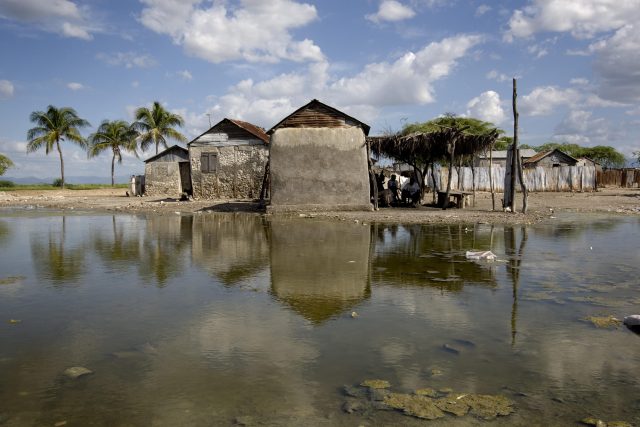In the bustling journey of childhood, where every day is filled with exploration, learning, and boundless energy, hydration plays a pivotal yet often overlooked role. As parents and caregivers, we strive to provide our children with the best opportunities for growth and development, ensuring they have the nourishment and support they need to thrive. However, in the midst of this dedication, the simple yet essential act of keeping our children properly hydrated can sometimes be underestimated. Understanding the importance of hydration is crucial not only for their immediate well-being but also for their long-term health and growth. In this article, we will explore how water serves as a cornerstone for children’s physical and cognitive development, and how establishing healthy hydration habits early on can set the stage for a lifetime of wellness. Join us as we delve into the science behind hydration and offer practical tips to ensure your child remains hydrated, healthy, and ready to conquer the world.
Understanding the Role of Water in Childhood Development
Water is a fundamental component of life, playing a crucial role in the physical and cognitive development of children. As their bodies are rapidly growing, adequate hydration ensures that all bodily functions operate smoothly. Dehydration, even in its mildest form, can affect mood, attention, and learning abilities, potentially impacting a child’s performance both at school and in extracurricular activities.
Here are some key benefits of maintaining proper hydration in children:
- Physical Growth: Water helps in the transportation of nutrients and oxygen to cells, supporting muscle and bone development.
- Cognitive Function: Proper hydration is linked to improved concentration and memory, vital for learning new skills.
- Temperature Regulation: Children are more prone to overheating. Water helps regulate body temperature, especially during physical activities.
| Age Group | Daily Water Intake |
|---|---|
| 1-3 years | 4 cups (approx. 1 liter) |
| 4-8 years | 5 cups (approx. 1.2 liters) |
| 9-13 years | 7-8 cups (approx. 1.6-1.9 liters) |
Encouraging children to drink water regularly can be made fun and engaging. Consider using colorful water bottles, or infusing water with slices of fruits to add flavor and appeal. Remember, fostering healthy hydration habits early on can pave the way for a lifetime of wellness and vitality.

Identifying the Signs of Dehydration in Children
Children are particularly vulnerable to dehydration, and recognizing the signs early can make all the difference. Being aware of these symptoms helps ensure timely intervention, keeping your child healthy and active. Here are some common indicators that your child might not be getting enough fluids:
- Dry Mouth and Tongue: A noticeable lack of saliva can be an early sign.
- Fewer Wet Diapers: For infants, fewer than six wet diapers a day may indicate dehydration.
- Tearless Crying: If your child is crying without tears, it could be a warning signal.
- Sunken Eyes or Cheeks: These physical changes often suggest a significant fluid loss.
- Fatigue and Dizziness: If your child seems unusually tired or dizzy, it might be due to inadequate hydration.
Monitoring these signs is crucial, especially during hot weather or after physical activities. A useful approach is to establish a hydration routine. Below is a simple table to help ensure your child stays adequately hydrated throughout the day:
| Time of Day | Recommended Water Intake |
|---|---|
| Morning | 1 Cup |
| Afternoon | 1-2 Cups |
| Evening | 1 Cup |
By keeping a close eye on these symptoms and maintaining a regular hydration schedule, you can help safeguard your child’s health and support their growth effectively.

Creating a Hydration Routine That Supports Healthy Growth
Developing a consistent hydration routine for children is crucial to support their physical and cognitive development. Here are some practical steps to ensure your child stays adequately hydrated:
- Set a Schedule: Encourage your child to drink water at regular intervals throughout the day. Consider setting reminders or using fun water bottles with measurement markings to track intake.
- Incorporate Variety: Offer a range of hydrating options such as water, milk, and diluted fruit juices. This not only makes drinking more enjoyable but also provides essential nutrients.
- Lead by Example: Children often mimic the habits of adults. By maintaining your own hydration routine, you reinforce the importance of drinking fluids regularly.
Monitoring your child’s fluid intake can be simplified with a structured approach. Below is a sample table to help guide daily hydration:
| Age Group | Daily Fluid Needs | Suggested Drinks |
|---|---|---|
| 1-3 years | 4 cups | Water, Milk |
| 4-8 years | 5 cups | Water, Milk, Juice |
| 9-13 years | 7-8 cups | Water, Milk, Smoothies |
Remember, every child is unique, and their hydration needs may vary based on activity levels and climate. By maintaining an open dialogue and observing your child’s preferences, you can create a hydration routine that not only supports their growth but also instills lifelong healthy habits.

Practical Tips for Encouraging Kids to Drink More Water
- Make It Fun: Transform water drinking into a game. Create a sticker chart and let your child add a sticker each time they finish a glass of water. After reaching a certain number of stickers, reward them with a fun activity.
- Lead by Example: Children often mimic the behavior of adults. Make sure you drink water regularly and express enjoyment in doing so. Your enthusiasm can be contagious!
- Flavor It Naturally: Enhance the taste of water by adding slices of fruits like lemon, cucumber, or berries. This can make water more appealing and encourage your child to drink more.
- Use Special Cups: Allow your child to pick out their favorite cup or bottle. Having a special, colorful cup can make the act of drinking water more exciting.
| Time of Day | Suggested Water Intake |
|---|---|
| Morning | 1 glass |
| Afternoon | 2 glasses |
| Evening | 1 glass |
Set a Routine: Incorporate water breaks into your child’s daily routine. For example, have them drink a glass of water with every meal and snack. This habit will naturally increase their water intake without feeling forced.








































